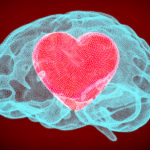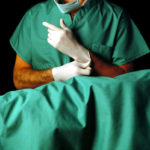By David Blyweiss, M.D., Advanced Natural Wellness
December 19, 2018
My patients are a curious group. They bring me all kinds of weird health tidbits they find online.
“Is this really true?” asks one patient.
“I’ll bet this is just a bunch of baloney,” says another.
Most of the time, they’re right to question what they’ve found. But every now and then, one of those “too weird to be true” concepts actually has merit.
For example, over the years I’ve discovered there are some pretty unusual warning signs associated with heart disease.
The strangest, by far, is creased earlobes.
MD Exposes the Hidden Danger to Your Eyes

When your eyesight starts to fail, it's a real problem. Suddenly you can't go to the grocery store... you can't get to the doctor if you have an emergency... you can't meet your friends for dinner…
Your "regular" doctor doesn't have time to keep up with the latest research. And the same goes for eye doctors. They go to school to learn how to fit you for glasses and contacts, but have no way of preventing the damage and loss of eyesight that threatens your freedom and independence.
Let me show you something that explains a LOT about how your eyes work.
In my FREE Special Report, I'll show you a HUGE, untapped resource for your eyes that safely and naturally restores clear, effortless eyesight.
Click here to get started...
I have them. Each of my ears has a crease that runs diagonally from my ear canal to the lower edge of my earlobe. And not surprisingly, cardiovascular disease runs in my family.
It’s suspected that these creases are a result of weakening collagen. And that the same type of deterioration may also be occurring in the small blood vessels and coronary arteries.
When this happens, the walls of the arteries lose their elasticity and become more susceptible to damage. This, of course, is very bad news for your circulatory system and heart health.
Another odd sign of heart disease is clubbed fingers. These are very easy to spot because the tips of your fingers get thicker and wider. (It can also happen in your toes, and sometimes causes your nails to bulge upward.)
Clubbing occurs when there isn’t enough oxygen-rich blood getting to your fingers. Thus, clubbed fingers typically indicate an underlying heart or lung problems that result in chronically low levels of oxygen in the blood.
If you have yellow bumps on your skin, your first stop is probably a visit to your dermatologist to find out how to get rid of them. But a trip to your cardiologist might be a better option.
These fatty bumps (xanthomas) are an indication of disturbed cholesterol metabolism, which may contribute to heart disease.
The strange thing about xanthomas is that most people who get them have cholesterol levels that fall in the “normal” range.
But there is something folks with xanthomas have in common: Elevated levels of apolipoprotein B (apoB).
This lipoprotein is associated with small, dense LDL particles and oxidized LDL that can easily enter your arterial walls and become trapped. This sets off a chain of events that result in inflammation, blockages and narrowed arteries that compromise blood flow to the heart.
The World's Quickest Solution for Ending Prostate and Urinary Misery
This has recently been revealed to be one of the only real breakthroughs in prostate health.
The seeds of a strange fruit (sometimes called "Chinese Apples") hold powerful phytonutrients that are a revolution in prostate health.
In fact, UCLA and Veterans Administration research have now proved this to be true.
Not only that, but it may be the worlds quickest solution for ending prostate misery.
Simply stated, these phytonutrients represent a huge step beyond beta sitosterol, saw palmetto, and other phytosterols alone.
Simply click HERE if you want to have fast prostate relief...restful, uninterrupted sleep...no more constant "urges to go"...enhanced virility...and optimal prostate support for life.
When oxygen-rich blood can’t get to your heart, it doesn’t receive the blood supply it needs to function. This damages and weakens the heart muscle, so that it can’t work as well as it should and could lead to congestive heart failure.
While these are some of the most peculiar symptoms of heart disease and heart failure, there are others that are more well-known.
These include things like shortness of breath, trouble breathing when you lay down, ankle swelling, fluid build-up in the abdominal cavity, fatigue, erectile dysfunction and sleep apnea.
The most important thing you can do is address circulatory issues before heart failure sets in.
My Top Recommendations for Preventing and Treating Heart Failure
A healthy, Mediterranean style diet and exercise are your best starting points. It’s also essential to maintain healthy blood pressure, address any weight issues, manage your blood sugar and avoid smoking.
I also recommend protecting your arteries, lowering blood pressure and preventing plaque build-up with a few supplements.
- Taking 600 mg. of Kyolic brand aged garlic extract twice daily can stop LDL cholesterol from oxidizing, which can reduce plaque build up. Plus, it helps lower blood pressure and reduces arterial stiffness.
- Supplementing with niacin can have a specific effect on the smaller, more dangerous LDL particles. Start on a low dose, about 50-100 mg daily. Then slowly add 50-100 mg each week until you’re up to 1,000 mg each day. Building up to higher doses slowly over weeks allows tolerance to the usual flushing to occur .
- Adding 600 to 900 mg of pantethine daily can slash apoB levels by 8% in as little as 12 weeks.
- Drinking just 250 ml of beetroot juice daily helps widen your blood vessels, improves oxygen delivery to your heart, and can lower your blood pressure by about 8/4 mmHg. It can also reduce arterial stiffness and thickening of the arteries. (If you don’t like beetroot juice, look for a nitric oxide enhancing supplement that has beetroot as a main ingredient.)
If you already have congestive heart disease, it’s urgent to prevent further damage to your heart.
You can do this by shoring up cardiac muscle cells called “myocytes”. When working with patients who have congestive heart disease, I recommend taking the following twice each day:
- 100-200 mg of CoQ10 in the ubiquinol form
- 750-1000 mg of D-Ribose
- 5 mg of magnesium per pound of body weight total in 2 divided doses
- 750 -1000 mg acetyl-L- carnitine
- 150 mg of hawthorn berry standardized extract
SOURCES:
Agouridis AP, et al. Ear lobe crease: a marker of coronary artery disease? Arch Med Sci. 2015 Dec 10; 11(6): 1145–1155.
McPhee SJ. Clubbing. In: Walker HK, Hall WD, Hurst JW, editors. Clinical Methods: The History, Physical, and Laboratory Examinations. 3rd edition. Boston: Butterworths; 1990. Chapter 44.
Sarkar M, et al. Digital clubbing. Lung India. 2012 Oct-Dec; 29(4): 354–362.
Dwivedi S, et al. Cutaneous markers of coronary artery disease. World J Cardiol. 2010 Sep 26; 2(9): 262–269.
Tursen U, et al. Apolipoprotein E polymorphism and lipoprotein compositions in normolipidaemic xanthelasma patients. J Eur Acad Dermatol Venereol. 2006 Mar;20(3):260-3.
Sharma L, et al. Androgenetic alopecia and risk of coronary artery disease. Indian Dermatol Online J. 2013 Oct;4(4):283-7.
Allison GL, et al. Aged garlic extract and its constituents inhibit platelet aggregation through multiple mechanisms. J Nutr. 2006 Mar;136(3 Suppl):782S-788S.
Omran H, et al. D-Ribose improves diastolic function and quality of life in congestive heart failure patients: a prospective feasibility study. Eur J Heart Fail. 2003 Oct;5(5):615–9.
Shecterle LM, Terry KR, and St Cyr JA. The patented uses of D-ribose in cardiovascular diseases. Recent Pat Cardiovasc Drug Discov. 2010 Jun;5(2):138–42.







